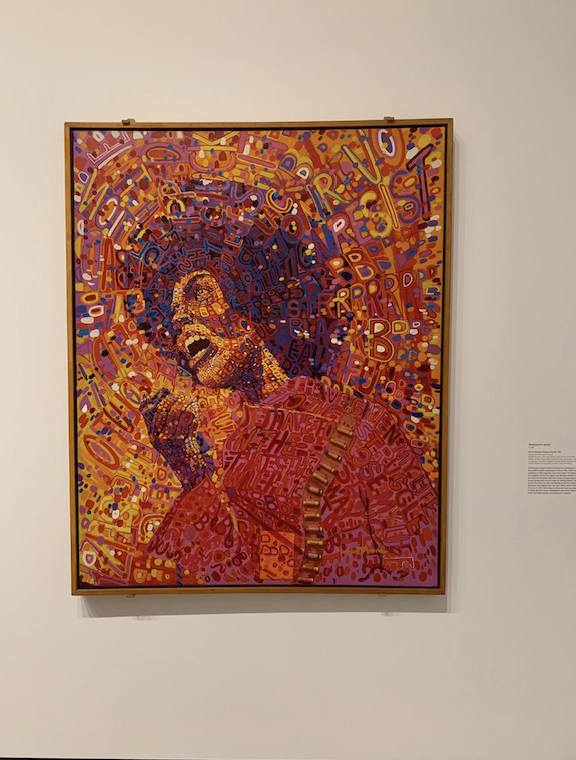‘Soul of a Nation’ honors the work of black artists

“Soul of a Nation: Art in the Age of Black Power,” which debuted March 23 at The Broad, highlights the works of black artists between 1963 and 1983. Since its debut at London’s Tate Modern organized the show, the exhibit has been on display at multiple American museums before coming to Los Angeles. The multimedia exhibit incorporates painting, drawing, sculpture and even performance. The show isn’t organized chronologically, rather focusing on artistic movements and collectives like the Africobra Movement and Just Above Midtown Gallery.
“Soul of a Nation” starts by introducing viewers to the Spiral Group, a New York-based artist collective that worked from 1963 to 1965. It then moves on to highlight works from the Black Panther Movement, displaying political pamphlets and posters. These pamphlets provide social and political context for the works of art on the wall, helping viewers engage with their history as they view the gallery.
While not every work in the show is overtly political, many of the artistic movements grew out of systemic exclusion. Many of the artists in “Soul of a Nation,” like Roy deCarava, whose black-and-white photos captured everyday life in Harlem, were traditionally excluded from museums and gallery spaces. Thus, they came together to form their own groups.
“Couple Walking” is one of the many deCarava photographs in the exhibit that attempts to capture the most intimate everyday moments. The photo shows a couple embracing as they walk down the street, seemingly unaware of the photographer behind them. By representing the lives of black people in America, artists like deCarava seem to fill a void in the traditional Western cut history canon.
The Broad’s presentation of “Soul of a Nation” also devotes an entire section to the works of Los Angeles-based artists, from Noah Purifoy and Betye Saar. The exhibition also provides examples of how black artists responded to mainstream artistic movements. One is a selection of paintings by Sam Gilliam and Jack Whitten, which shows how different their works are from other abstract expressionist artists like Jackson Pollock.
The exhibit’s core strength lies in how much ground it manages to cover without cutting any corners. The show highlights artists from across the U.S., and includes over 200 works of art from more than 60 different artists. Still, the show is sectioned into nicely sized rooms, which helps viewers feel less overwhelmed by the sheer number of pieces in the exhibit.
“Soul of a Nation: Art in the Age of Black Power” runs at The Broad Museum until Sept. 1. The show costs $18 for adults and $12 for students. However, admission is free on Thursday from 5 to 8 p.m.

